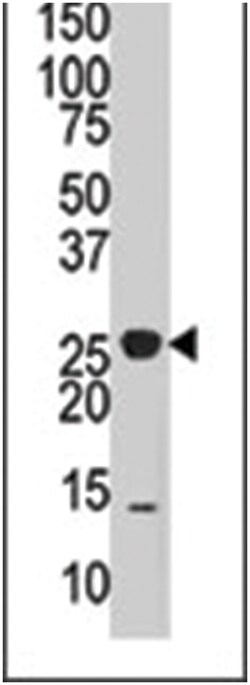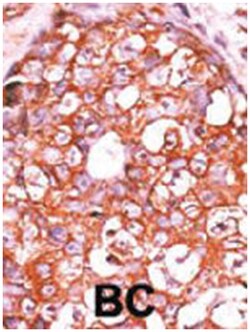Learn More
DUSP14 Rabbit anti-Human, Mouse, Polyclonal Antibody, Abnova™
Rabbit polyclonal antibody raised against synthetic peptide of DUSP14.
Supplier: Abnova Corporation PAB4143
Description
In addition to antigen recognition by the T-cell receptor, T-cell activation requires a second signal from a costimulatory receptor, such as CD28 (MIM 186760), which interacts with B7-1 (CD80; MIM 112203) and B7-2 (CD86; MIM 601020) ligands on antigen-presenting cells. CD28 costimulation induces transcription of interleukin-2 (IL2; MIM 147680) and stabilizes newly synthesized IL2 through the activation of mitogen-activated protein kinases (MAPKs), such as ERK (e.g., MAP2K4; MIM 601335) and JNK (see MIM 601158), and the subsequent creation of AP1 transcription factor (see MIM 165160). DUSP14 is a negative regulator of CD28 signaling.[supplied by OMIM
Specifications
| DUSP14 | |
| Polyclonal | |
| Rabbit polyclonal antibody raised against synthetic peptide of DUSP14. | |
| In PBS (0.09% sodium azide) | |
| NP_008957;O95147 | |
| DUSP14 | |
| A synthetic peptide (conjugated with KLH) corresponding to C-terminus of human DUSP14. | |
| 400 μL | |
| Primary | |
| Human, Mouse | |
| Liquid |
| ELISA, Immunohistochemistry (PFA fixed), Western Blot | |
| Unconjugated | |
| ELISA (1:1000) Western Blot (1:100-500) Immunohistochemistry (1:50-100) The optimal working dilution should be determined by the end user. | |
| DUSP14 | |
| MKP-L/MKP6 | |
| Rabbit | |
| Protein G purification | |
| RUO | |
| 11072 | |
| Store at 4°C. For long term storage store at -20°C. Aliquot to avoid repeated freezing and thawing. |
Your input is important to us. Please complete this form to provide feedback related to the content on this product.
For Research Use Only

